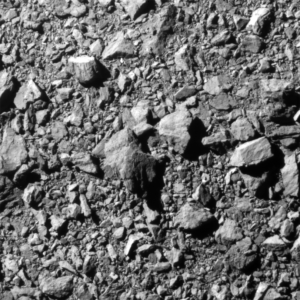GRASS asteroid gravimeter undergoes testing


It’s pictured above in the lab’s thermal vacuum chamber.
The GRASS gravimeter – developed by the Royal Observatory of Belgium and the Spanish company EMXYS – will be landed on the surface of the Dimorphos asteroid aboard the Juventas CubeSat (which will itself be deployed from ESA’s Hera mission for planetary defence).
That’s the asteroid that was pin-balled by Nasa’s DART spacecraft
It’s designed to measure an expected gravity level of less than a millionth of Earth’s own. To prove it was ready for integration with Hera’s Juventas CubeSat, GRASS was subjected to spacelike vacuum and temperature extremes within a thermal vacuum chamber, then underwent sustained shaking to mimic the violence of a rocket launch.
“It may be small but GRASS is packed with complex mechanical parts and electronics,” said Jose Carrasco, who has been overseeing the instruments at EMXYS.
“We’re very happy with its endurance during the test campaign. We will now follow up with a full integrity test to ensure it has sustained no damage during the testing, after which it will be passed to the GomSpace company in Luxembourg for integration aboard Juventas.”
Design constraints? The instrument had to be small enough to fit into the Juventas CubeSat, itself only the size of a shoebox, along with Juventas’ main radar instrument. Their final design is just 330 grams in mass and requires only half a watt of power.
Hera Giza
The destination asteroid, which is technically a moonlet, is around 160m in diameter, making it – in the words of the ESA – about the same size as Egypt’s Great Pyramid of Giza.
Dimorphos became famous last year following the space test collision that measurably shifted its orbit around the larger Didymos asteroid.
 Pictured right is the last complete image of asteroid Dimorphos, taken by the DRACO imager on NASA’s DART mission from ~7 miles (12 kilometers) from the asteroid and 2 seconds before impact. The image shows a patch of the asteroid that is 100 feet (31 meters) across.
Pictured right is the last complete image of asteroid Dimorphos, taken by the DRACO imager on NASA’s DART mission from ~7 miles (12 kilometers) from the asteroid and 2 seconds before impact. The image shows a patch of the asteroid that is 100 feet (31 meters) across.
Image: (main) ESA (bottom) NASA/Johns Hopkins APL
See also: Picture of the Day – Smallest radar instrument to be flown in space
Source link





